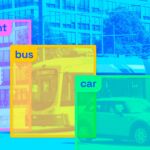
Artificial intelligence (AI) is directly correlated with Data Science, which is aimed at extracting business value from an array of information. This value can consist of expanding the capabilities of forecasting, knowledge of regularities, informed decision-making, cost reduction, etc. In other words, artificial intelligence operates with massive arrays of information, analyzes incoming data, and develops adaptive solutions based on them.
In the modern world, the retail industry is rapidly increasing the application of artificial intelligence in all possible work processes. Thus, leveraging opportunities by applying analytics can undoubtedly improve a wide range of operations in the grocery industry. With AI, the largest supermarket chains are achieving very ambitious aims:
- improving and expanding customer service capabilities,
- automating supply chain planning and orders delivery,
- reducing product waste,
- sharpening the management of out-of-stock and over-stock (grocery stock out), and
- enhancing demand forecasting.
The AI solution ecosystem is extensive and able to satisfy most needs of all grocery retailers (from large chains to the smallest businesses). As of now – during the quarantine, online grocery analytics has become a real “savior” in terms of managing stock-out conditions. With intelligent data-driven approaches, supermarkets can process a large amount of information, accurately forecast consumer demand and supply inventory, and generate the most accurate pricing and purchasing recommendations. As a result, grocery retailers will not only stay afloat, but will continue to generate profits even throughout the most critical situations, like during the coronavirus pandemic. With that being said, it is evident that all companies now require an immediate action plan in response to COVID-19.
A New Level of Video Surveillance
As a rule, most grocery stores have a continuous video surveillance system. Previously, such systems were installed only for security purposes: controlling the safety of products and preventing theft. But now, artificial intelligence video analysis is able to monitor the behavior of customers from the moment they enter the store until payment. How does it work, and why do stores need it?
Large grocery chains like Amazon and Walmart use high-tech cameras that utilize automatic object identification (RFID). Typically, such a system is used in unmanned electric vehicles to monitor passenger behavior and process visual information via a computer. But the primary goal of video grocery store analytics is to determine which items are in high demand, which products buyers most often return to the shelves, etc. Moreover, cameras recognize faces, determine heights, weights, ages, and other physical characteristics of customers. Subsequently, the AI (based on all the obtained data) identifies the most popular products from specific consumer groups and offers options for changing the pricing policy. A computer automates all these processes without human intervention.
Preventing Grocery Stock-out and Shrinkage
Artificial intelligence in the retail industry is capable of solving problems that people cannot cope with. Experts state that a person physically cannot view all the video surveillance. There is not enough time for this, and unfortunately, human vision is not perfect. But this is no longer necessary! Video analytics for grocery stores perfectly copes with such tasks. For example, connecting cameras to the store’s automated warehouse system and equipping shelves with sensors can uncover gaps in inventory records and stimulate investigations. Grocery store data analytics can also monitor stocks and provide signals about replenishment needs. Facial recognition technology as described above is capable of comparing the faces of people with criminals (or wanted individuals) and warn security.
Advancing Traffic Flows and Store Layout
Data collected about customer behavior helps supermarket managers optimize store layout. Moreover, the computer program can design the most “optimal” layout and test it, generating an overall better customer experience and an increase in the store’s monthly profit figure.
Data can be collected about the number of people that enter a store and the amount of time they spend shopping. Based on this data, artificial intelligence can predict crowd sizes and the length of time people wait in line. It will help improve customer service and reduce staff costs during “calm” hours. In other words, AI is able to draw optimal store management plans at various hours of the day with maximum benefit for the business. For example:
- develop traffic flows
- optimize display placement and floor planning
- improve strategic staff distribution
- draw correlations within the dwell time and purchasing
- predict products for individual shopping groups
Enhancing Customer Experience
Every business should know as much as possible about its audience to offer the best possible service. AI in grocery stores using video intelligence software gives detailed demographic data with a detailed analysis of shopping habits. This information provides unlimited opportunities for stores to increase profits. By knowing their customers, store managers can maximize the client shopping experience, creating favorable conditions (made specifically for customers’ preferences). Furthermore, AI for grocery stores can help produce the most accurate demand forecasting models of the given target market.
In addition to working with the target audience, managers can transfer information to the marketing department with the data obtained from video analytics. By exploring other audiences, marketers can develop strategies to attract new customers by creating relevant advertising, promotions, and sales. Additionally, stores can create separate display cases (vegan products or gluten-free) for small shopping groups, satisfying their needs.
Among all existing technologies of artificial intelligence for grocery stores, video content analytics provides maximum support in almost all activities: merchandising, marketing, advertising, and layout strategies. By optimizing these processes, stores not only save and reduce losses, but also have the opportunity to expand their business by increasing profits. The main goal is not only to satisfy customers, but to strengthen customer retention rate.





 Related Podcast Episode
Related Podcast Episode




 Related Applications
Related Applications



 Latest IoT News
Latest IoT News







